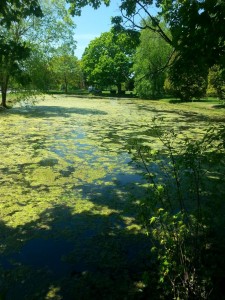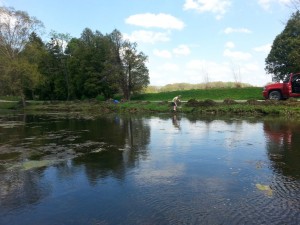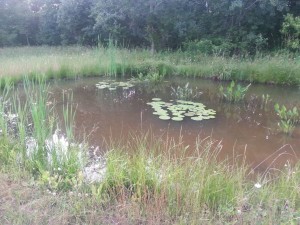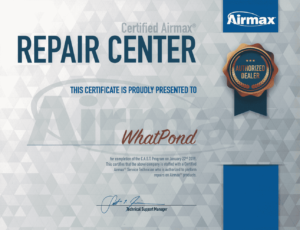Buying a pond or you are looking at a piece of property and it has a pond. Here are some examples of what to look for or look at when you walk around the pond.
The first couple quick things to do is simply look at the pond, is the water clear or cloudy? Is the pond covered in weeds/Algae? How deep is the pond? And stick a foot into the bottom of the pond, how deep do you sink and does it smell.
How is the pond filled, where does it get the water from, spring, stream or the watershed above the pond or a combination of both? What we are looking for is what is above the pond in the watershed, if it is all on your property good news, but if the water comes from neighboring properties. What we are getting at is the nutrient load that could make it to your pond. Farm land or residential lands both have draw backs but we can always build a buffer zone to slow the water down and drop out the heavy particles before entering the pond.
Looking closer to the stream fed pond is the concern of what is getting into the water up stream, fertilizer or septic run off. Walk up stream and check it out. The other thing to look at is in the event of a major rain storm or large snow melts is the potential of washing in silt and sediment. After a rain storm you may have seen the streams and creeks turn brown/muddy looking. This is what will end up at the bottom of the pond once it settles out of the water column.
The depth of the pond is also important, not just what the owner says it is but get out there on a boat and do a physical measurement. It seems they are all 20’ which would be great but I would check it out myself to be sure. Why? A 20’ deep pond is much easier to aerate than a 6’ deep pond. Should be less weed growth and a little easier to maintain, but don’t worry if the pond is shallow, it would take a more diffusers to properly aerate the pond but not a real game changer.
If you have an option of two locations and there is a large pond one place and two ponds on the second place it would be a tough decision.
One large pond would be easier to work with since we only have one pond to install aeration but if the place with two ponds are near each other we could always place the compressor between them and run tubing to each pond for the diffusers. As for beneficial bacteria treatments, they are calculated by surface acre and whether you do one or two ponds wouldn’t make too much of a difference.
Does the pond have chemicals in it or is it safe to swim in? Again I would ask the previous owner or a neighbor if they know what was put in the pond. There is a potential some chemicals could build up in the sediment over the years which could be checked out by taking a sample of the bottom of the pond and having it tested. Same with taking a water sample to see what is in the water. Again muck, murky water and smells can be taken care of with Proper aeration and beneficial bacteria’s.
As with any existing pond or a pond to be built, first right down the main use you want the pond for. What will you do at the pond the most and follow up with secondary needs for the pond. This will help determine the approach to take when building an managing your pond. Ponds can be a place of relaxations and enjoyment for years to come and if the pond is showing some age we can help to reverse the process.
Use the contact form at the top of the site to let us know how we can help.
Check out our pond education page for additional free and paid information and also available on Amazon Kindle for a small fee.




